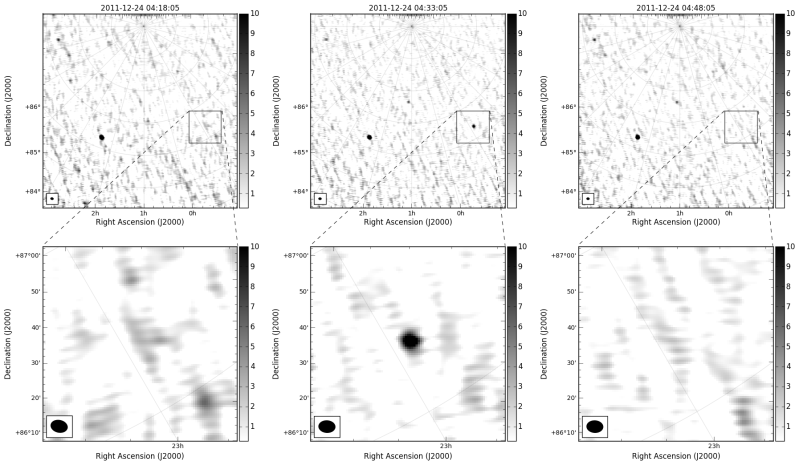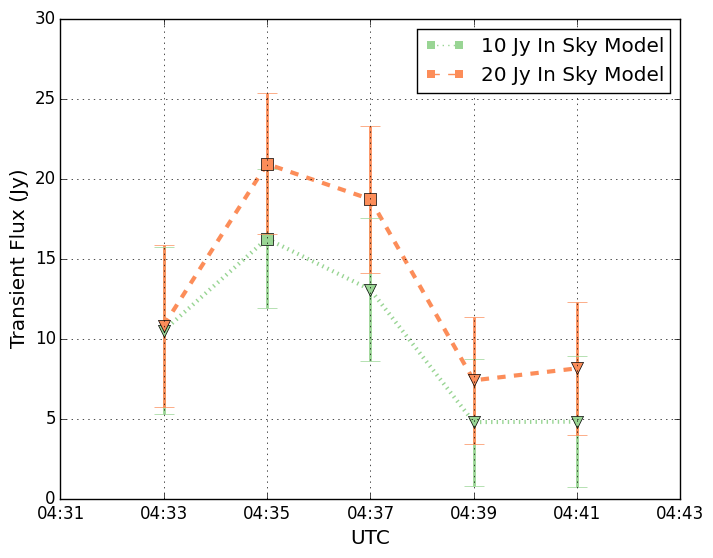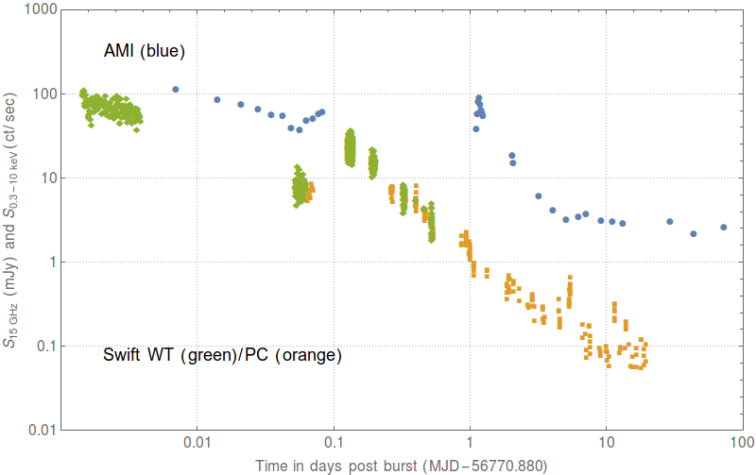4 Pi Sky Authors: Adam Stewart / Rob Fender / Jess Broderick / Tom Hassall / Teo Muñoz-Darias / Tim Staley / Gosia Pietka / Rene Breton
See the full publication on astro-ph
Until a few years ago, the low-frequency radio transient sky was a relatively unexplored area of science. However, this is fast changing with new, low-frequency radio telescopes now fully operational and performing frequent transient surveys. 4 Pi Sky has led one of the first transient searches using one of these telescopes, LOFAR, where the North Celestial Pole (NCP) was monitored for around 400 hours over a period of four months. This resulted in the discovery of a new transient event, which is detailed in a paper due to be published in MNRAS and announced today on astro-ph.

Caught: The transient as it appeared in the images generated by LOFAR, showing the transient appearing, and subsequently disappearing, from view. The lower panels display a zoom-in of the transients location.
The transient, named ILT J225347+862146, was detected in only one of 1897 60 MHz observations, with a brightness of approximately 20 Jy. It was discovered by using the LOFAR Transients Pipeline (TraP), a piece of software 4 Pi Sky helped develop. Each of these observations was 11 minutes in duration, so it was possible to probe the transient at a higher time resolution by splitting the data into two minute observations. In doing this, it was found that the transient only appears to be active for only 4-6 minutes of this observation.

A brief burst: The light curve of the transient object during the 11 minute period of the observation, showing a sudden appearance along with a just as fast decline. The different light curves denote slightly different processing methods of the data, but both show the same trend.
But what is ILT J225347+862146? No objects at the transients location have been detected in historical radio catalogues, nor were there any obvious candidates in optical follow-up observations performed with the Liverpool Telescope. Possibilities were explored; from extragalactic fast radio bursts, to perhaps a nearby flare star, but while some of the characteristics of this transient were consistent with previously detected events from these objects, others were not. One feasible explanation is that could be from a nearby substellar object, for example a brown dwarf, which are difficult to detect. However, at this stage, the true origin of ILT J225347+862146 remains a mystery.
With the continual, and rapid advance in technology and techniques of low-frequency radio astronomy, then ILT J225347+862146 may be the first of many such transients of this nature to be discovered.



